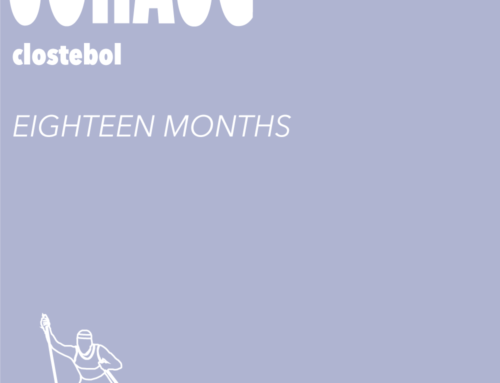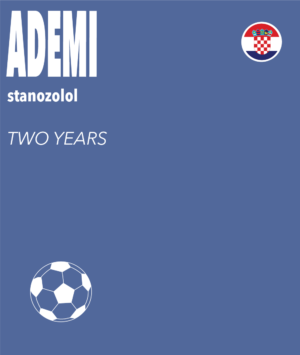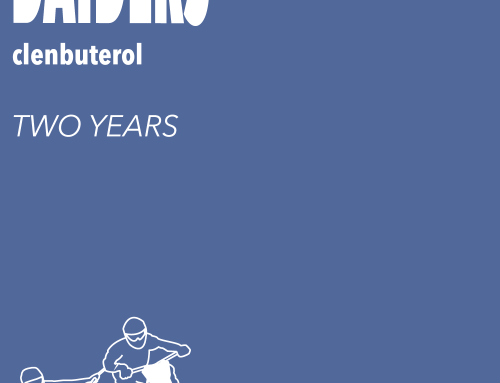In Fall 2015, WADA announced its decision to add the anti-ischemic drug “Meldonium” to its Prohibited List with effect on 1 January 2016, after the Monitoring Program and observation period 2015 revealed “evidence of its use by athletes with the intention of enhancing performance” (Explanatory Notice to the 2016 List). Few observers could have predicted at the time that this routine annual revision would lead to a flood of positive cases in Spring 2016 and nearly trump the pre-Olympics Russian and Zika virus concerns on the scene of sports news. The positive test involving star tennis player Maria Sharapova undoubtedly contributed to attracting the media’s attention on Meldonium and, by reflex effect, on the mechanics of inclusion of Prohibited Substances on the WADA List.
The decision of the ITF Tribunal rendered on 8 June 2016 should thus constitute an important reference standard for other hearing panels in pending proceedings, and this even though Maria Sharapova already announced her intent to appeal the decision to the Court of Arbitration for Sport.
In the following, we provide a short overview and analysis of what we identified as the key points of the decision. These key points either clarify important notions of the new 2015 WADC, or should prompt the sports law and anti-doping community to further reflexions.
1. Document production requests before internal tribunals
Document production requests may become of higher practical significance with the introduction of “intentional” doping, even in the initial hearing process. This will require hearing panels to develop the capacity to deal with these requests, procedurally and in terms of evaluation of the evidence.
The issue of whether the internal tribunal of an International Federation may order production of documents (as CAS arbitration panels are entitled to do on appeal under the CAS Code) is not an issue often considered at the stage of the initial hearing process.
While the option for the Tribunal to request production of documents was not formally used in the case at issue, the ITF Tribunal pointed at the fact that the notion of “intentional” doping newly introduced in the 2015 WADC results in a higher relevance of the factual background at the origin of a positive Sample. In the Sharapova case, the ITF did request disclosure from the Athlete, and at the hearing it was confirmed that the disclosure included all documents related to the Athlete’s awareness regarding her use of Meldonium. The Tribunal declared itself entitled to both reach conclusions on the documents produced and to “draw inferences” from the absence of other documents.
The possibility of document production requests should certainly be contemplated in the initial hearing process, if only to avoid unnecessary appeals before CAS panels that could then order such production. Two remarks can be added to avoid any ambiguities that may arise from the ITF Tribunal’s reasoning.
- First, requests for production for evidence and adverse inferences for failure to produce are normally only of interest when the party that bears the burden of proof lacks evidence to discharge this burden, and the evidence is under the control of the other party. Here, since Ms Sharapova had the burden of proof for both the non-intentional character of the violation and to establish No Significant Fault or Negligence, the evidence requested by the ITF amounted in reality to pointing the Athlete towards the evidence she should produce in order to build her defence. Accordingly, any non-production on part of the Athlete would not strictly speaking trigger ‘inferences’ against her, but should simply lead to the conclusion that she did not do what was necessary to discharge her burden.
- Second, the possibility mentioned by the Tribunal must run both ways: Athletes cannot be barred from requesting additional documents, including laboratory documentation or data related to their Samples (see next section) that may be helpful to their defence but are under the control of the Anti-Doping Organization, subject to adverse inferences being drawn against the defaulting Anti-Doping Organization. By contrast, the idea that adverse inferences might be drawn against Athletes who would fail to produce documents detrimental to their case would need to be assessed very carefully to avoid any conflict with a privilege against self-incrimination under the laws applicable to the case, given the similarity between criminal proceedings and doping proceedings.
2. Access to data gathered from Athlete Samples
The identity of Athletes who test positive to substances on the Monitoring Program must not be reported to their Anti-Doping Organization. However, Athletes may obtain and use such data from prior Samples for their defence if the substance is subsequently added to the List and they are charged with a violation.
It is unusual for a case to address the status of the Monitoring Program and, more generally, the fate of data obtained from an Athlete’s Sample that was not immediately relevant for initiating anti-doping proceedings. The decision contains two important hints in that regard:
- Laboratories must not report individual results for Samples in which a Monitored Substances is detected to the relevant Anti-Doping Organizations; and
- The Athlete may, upon request, obtain data from prior – negative – Samples if such data proves relevant for his or her defence.
It can only be welcomed that the issue of ‘sensitive personal data’ that can be obtained from Doping Control Samples appeared as a topic in an anti-doping decision, even if in casu this was only to stress that an Anti-Doping Organization cannot have a duty to warn its Athletes that their Samples were positive for a substance on the Monitoring Program; and thus, implicitly, that they are at risk of soon returning an Adverse Analytical Finding. Even though this aspect of the WADC regime was presented as protective of the Athlete’s privacy, one may wonder what the position of the anti-doping movement would be if certain Athletes were to announce their decision to waive their right to confidentiality and give their consent to findings for Monitored Substances being notified to them.
Above all, this aspect of the decision truly highlights the importance of the Anti-Doping Organization assisting an Athlete charged with an anti-doping rule violation in obtaining additional data from the Sample at the origin of the violation, or even from other Samples. Without such cooperation, in particular a request from the Anti-Doping Organization to the laboratory, the Athlete has little prospect under the current WADC and related technical rules to obtain this type of data directly. The decision also constitutes a reminder of the distinction made under the current World Anti-Doping Program between using Samples for research purposes and using Samples for the purpose of the Monitoring Program, a distinction that appears artificial and will hopefully become the object of further scrutiny in future.
3. Scope of the notion of “intentional” doping
The factual knowledge of the Athlete – as opposed to what he or she ought to have known –is relevant to determine the recklessness component of “intentional”. An Athlete who does not know the medication contains a Prohibited Substance does not act recklessly in this sense, as he or she does not intend to “cheat”. Intentional refers to knowledge of the prohibited character of the conduct.
The case provides some valuable input on the interpretation of the concept of “intentional” doping newly introduced in the 2015 WADC. The stakes were high, since a finding of intentional doping would have led to a four-year Ineligibility period. As Meldonium is not a Specified Substance, the burden of proof was on Ms Sharapova to establish that the violation was not intentional. The parties agreed that Ms Sharapova did not know – as a matter of fact that Meldonium was a Prohibited Substance, so there was no direct knowledge of committing an anti-doping rule violation on her part. The whole debate therefore revolved around the second limb of the definition of intentional doping, the element of dolus eventualis or recklessness (i.e., in the language of the WADC, “knew that there was a significant risk that the conduct might constitute or result in an anti-doping rule violation and manifestly disregarded that risk”, Article 10.2.3).
According to the ITF Tribunal, ‘knowledge’ in the sense of Article 10.2.3 is evaluated on “actual knowledge” of an Athlete, not by what an Athlete “ought to have known or understood”. Framing the analysis in this manner allowed the Tribunal to reach the conclusion that an Athlete is taking a medication and knowing that the Prohibited List is amended annually is not sufficient to create knowledge of a risk of committing an anti-doping rule violation that could qualify for recklessness, as long as the Athlete does not know, in fact, that the substance is prohibited. The panel thus assigned a significant role to the “cheating” element of the definition of intentional: since Ms Sharapova was genuinely mistaken as to the rules (i.e. was not aware that Mildronate contained a Prohibited Substance), she did not intend to cheat.
This reasoning contains the implied assumption that knowledge required for the definition of ‘intentional’ doping is knowledge of the prohibited character of the conduct, not mere knowledge of the conduct itself. This represents a significant difference compared to typical concepts of an intentional offence in criminal law, specifically under Swiss criminal law. Moreover, the ITF Tribunal’s finding that the basis for assessing recklessness must take as a starting point the Athlete’s actual knowledge, taken literally, could lead to questionable results if carried through to its logical end. Under the Tribunal’s interpretation, it would be sufficient for an Athlete to refrain from checking the Prohibited List on a regular basis – thus avoiding acquiring factual knowledge of the contents of the List and its updates – to avoid falling into a situation of recklessness and thus avoid any risk of ‘intentional’ doping.
A more measured understanding would be to require some degree of ‘reasonableness’ in the nature of the Athlete’s error on the contents of the Prohibited List, rather than accepting a blanket defence of ‘ignorance of the law’. In the case of Ms Sharapova, the Tribunal’s generous approach could be explained, to a certain extent, by the Athlete’s mistake being made against the backdrop of ten years of use of the substance without an issue and her trust in the initial medical advice sought. One would expect factual circumstances in which the error on the law is less reasonable and more reflective of deliberate ignorance of the rules (and thus, of ‘cheating’ within the meaning of Article 10.2.3) to be denied such generous treatment.
In particular, the position of the Tribunal was that in some cases an Athlete who consumes a supplement is considered to accept the known risk that the product contains a substance that is prohibited, regardless of their factual knowledge. If this position is rooted in the conviction that Athletes should now be aware of the dangers going ahead with sports supplements, the argument can easily be transposed to medications: it should be widely known that many – if not most – substances on the Prohibited List were originally designed for use as therapeutic products, so that use of a medication equally carries a high risk of being confronted with a Prohibited Substance.
Thus, depending on the factual circumstances, an Athlete at the highest level of his or her sport who takes a medication over years without medical support could arguably be considered to act with dolus eventualis, and thus intentionally within the meaning of Article 10.2.3, even if the Athlete can show that he or she did not know that the medication contained a Prohibited Substance. This especially if it appears clear that the Athlete was using the substance in the hope of gaining an edge in competition, rather than for legitimate therapeutic purposes. Relying solely on the Athlete’s factual ignorance of the contents of the List would amount to tolerating and even rewarding ‘wilful blindness’.
4. Publicity of updates to the Prohibited List
The Prohibited List normally lists the name of active substances, not brand names of medications or other products that may contain these substances. The Anti-Doping Organizations sufficiently fulfil their duties to publicize updates to the Prohibited List by posting the amendments on their website. In any event, failure to properly publicize does not relieve the Athletes from their own personal duty to be aware of the contents of the Prohibited List at any given time.
While this was not a central issue in the dispute, the ITF Tribunal decision contains a few useful reminders on the composition of the Prohibited List, and the manner in which the List must be approached when dealing with medications or other therapeutic products. It is useful to provide a brief overview of the current regulatory situations, since this aspect of the case may be made a topic in other cases, having been heavily debated in the media. In particular, the issue can be summarized as follows: was it correct to include only the term (“Meldonium”) on the Prohibited List or should the therapeutic product most frequently taken (“Mildronate”) have been mentioned, too?
The Prohibited List does not typically list trade names of medications, but always active substances, since the same active substance may be marketed under different names in different countries. More precisely, WADA currently seeks to enhance the clarity of the List by indicating the WHO International Non-Proprietary Name (“INN”) (as announced in its summary of modifications for the 2014 List). Meldonium is a WHO recommended INN, which is marketed, among others, under the name Mildronate.
This approach seems appropriate for a document like the Prohibited List that needs to reconcile scientific accuracy and legal predictability. Thus it does not come as a surprise that Mildronate was not the term used on the Prohibited List, especially for a drug that should only be taken for medical purposes and on prescription. To a health professional, it should be obvious that Mildronate should be (also) be searched for as Meldonium on the Prohibited List.
Another issue is whether brand names or other coexisting names should be listed, in addition to the INN, in communications announcing updates to the Prohibited List. Hence, the WADA Explanatory Notice published with the 2016 List, which the ITF referred to on its website, did also mention the term Mildronate. Other National Anti-Doping Organizations offer a website with the names of drugs that also include the brand names registered within their territory. This raises the issue of how much ‘education’ work can be required from Anti-Doping Organizations to ensure that Athletes do not misunderstand or skip amendments to the Prohibited List.
The ITF Tribunal decision refused to recognize a duty of International Federations to specifically warn Athletes about updates of the Prohibited List. The Tribunal held that publication of the amendments – or link to the WADA explanatory notice – on the website is sufficient to fulfil the Anti-Doping Organization’s duty, under the WADC, to publicize updates to the List. Furthermore, according to the panel, any failure to publicize would in any event not relieve Athletes of their own duty to be aware of the contents of the Prohibited List, so that failure to publicize should not be regarded has having a causal effect for the violation.
The Tribunal’s reasoning can probably be approved in its outcome, with respect to the particular matter. However, it is difficult to square with Article 4.1 that assigns each Signatory – among which are International Federations – the duty to “take appropriate steps to distribute the Prohibited List to its members and constituents”. One wonders if mere publication on a website, without further action truly grants an acceptable level of predictability to the system, nor whether the term “appropriate steps” can legitimately be seen to replace any sort of tailored approach to distributing the contents of the Prohibited List to meet the needs of their own sports. One also wonders if the Tribunal’s analysis would have gone a different way if the information received by the ITF in March 2016, i.e. after Ms Sharapova’s test, had revealed widespread abuse of Meldonium in tennis, or if the Tribunal had incorporated in its analysis WADA’s actions to publicize the amendment. It will be interesting to see how panels considering similar circumstances in other sports where the data of widespread abuse must have been more compelling.
5. Evaluation of No Significant Fault or Negligence
The fact that a substance was just newly added to the Prohibited List does not per se qualify for a No Significant Fault or Negligence finding. Non-disclosure on the Doping Control Form can have adverse significance for the Athlete’s degree of fault, at least when the non-disclosure cannot credibly be brought back to inadvertence. High-profile Athletes may have a high duty to surround themselves with an appropriate “anti-doping infrastructure”, but ultimately this is part of the Athlete’s personal responsibility for substances found in their Samples.
The decision clarifies several factors in the assessment of No Significant Fault or Negligence. While Ms Sharapova did not argue that she should benefit from a finding of No Fault or Negligence, she did claim that a finding of No Significant Fault or Negligence would be appropriate.
The evaluation of fault was not straightforward in this case, given that the factual circumstances bridged consuming a substance that was not prohibited, but in a manner that was intended to enhance performance in competition and was hidden from anti-doping authorities, to unknowingly continuing use of substance that had newly become prohibited. The following points can be extracted:
- Role of the status of a “newly” Prohibited Substance. The ITF Tribunal found, by comparison with past CAS decisions, that the fact that a substance was initially non-prohibited when treatment first began, so that the breach of the Athlete’s duty of diligence consists in a failure to do continuing checks, does not, in and of itself, qualify for No Significant Fault or Negligence. Moreover, the No Significant Fault or Negligence test is more stringent if the Athlete takes – or continues to take a medication without medical advice.
- Role of the Doping Control Form. The Tribunal found non-disclosure of a medication – even a non-prohibited one – relevant to assessing the degree of fault. However, this was qualified by a need to examine the reasons for failing to disclose. Mere non-disclosure should arguably not automatically entail adverse significance for the Athlete under the Tribunal’s reasoning: an adverse significance can be recognised at least if the failure to disclose cannot plausibly be considered inadvertent. The balance between the system’s legitimate wish to gather as much information as possible to clarify the factual background in case of an Adverse Analytical Finding, and the Athlete’s right to keep health-related personal information unrelated to doping conduct to themselves is a difficult one to strike. Hence, the disclosure on the Doping Control Form should remain primarily a tool to attenuate the Athlete’s fault in case of disclosure, not to aggravate it in case of non-disclosure.
- Role of the high-profile status of the Athlete. The recurring question of how to factor in the behaviour of the entourage in evaluating an Athlete’s degree of fault was cast in an interesting light. The Tribunal framed its reasoning as a “factual puzzle” as to how Ms Sharapova could test positive even though she had access to the “very best sporting and medical advice attainable.” Against this backdrop, the Tribunal’s comments about the impossibility of fulfilling her duties under the WADC without proper disclosure to anti-doping authorities and her own team seem to suggest a requirement – or at least an expectation – on high-profile Athletes to spend sufficient resources on avoiding anti-doping rule violations.We would only note that, as the Tribunal highlighted, the obligations under the WADC come back to a “personal obligation” on the part of an Athlete, and the Code envisions no direct obligation of openness with her own entourage as to what medications or other substances the Athlete takes. The role of the entourage comes into play only when the Athlete alleges that the entourage was entrusted to perform these duties. For high-profile Athletes, like any other, absent any obligations imposed on them, it is within their discretion whether to entrust that task to the “best care attainable” or fulfil their duties on their own, and accept full responsibility for the consequences of this decision.
- Role of use for therapeutic purposes. While this is far from a consistent stance in CAS jurisprudence, in other situations, medical use which could have been the subject of a Therapeutic Use Exemption was considered to entrain only a “light” degree of fault. As of 1st January 2015, the International Standard for TUEs enshrines an option to apply for a retroactive TUE for “fairness” reasons, if both WADA and the relevant Anti-Doping Organization agree. Whether Ms Sharapova’s use of Mildronate could have been the subject of a TUE at all, let alone a retroactive one, was not discussed. The panel flatly rejected the notion that Ms Sharapova was taking Mildronate for medical purposes at the time of the anti-doping rule violation.
Reading the ITF Tribunal decision, especially the conclusive remark – “She is the sole author of her own misfortune” – might convey a feeling that the ITF Tribunal’s assessment of the case fell just short of recognizing that a four-year period of Ineligibility period was warranted. The ITF Tribunal refused to attribute a qualification of “intentional” doping to Maria Sharapova, but assessed her fault in committing the violation in a rather severe manner, characterizing it as “very significant”. In fact, the ITF Tribunal was adamant that there were absolutely no reasons in the case at issue for departing from the WADC regime based on a direct application of the principle of proportionality.
This outcome would appear to indicate that the Tribunal was mindful to avoid creating a general precedent in which failing to discontinue a medication that is newly added to the Prohibited List would have to be labelled as ‘intentional’ doping. The tone of the decision, by contrast, indicates that the Tribunal had little sympathy for Ms Sharapova’s particular circumstances. Sections of the decision finding that the use was “only consistent with an intention to boost her energy levels”, and pointing at her “concealment from the anti-doping authorities”, and even her own team, as “a very serious breach of her duty to comply with the rules” and constitutive of a serious “moral fault” show that the Tribunal strongly disapproved of Ms Sharapova’s attitude towards her anti-doping duties. The reproach made to Ms Sharapova seemed to include an expectation that she ought to have been more open about her use of – even non-prohibited – medications, or even that there was some form of wrongdoing in her taking those medications altogether. From this viewpoint, the decision raises issues regarding the general impact of elite sport practice on health and the disclosure of private medical information, beyond the question of anti-doping.
It is likely that a panel of the CAS will soon be called to reassess these issues, on appeal by Ms Sharapova to claim a reduced sanction and, possibly, also on appeal by WADA, or another Anti-Doping Organization with a right to appeal, to claim a finding of intentional doping and a four-year ban.







Leave A Comment